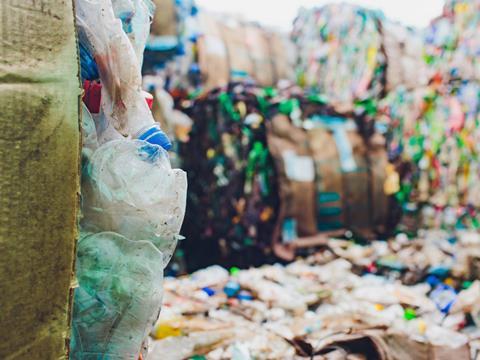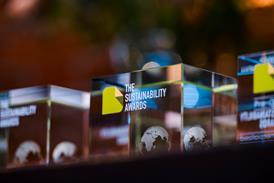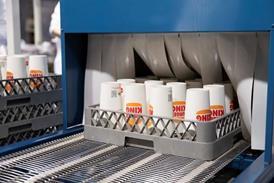
In the best-case scenario, Extended Producer Responsibility (EPR) is meant to be a transformative policy tool that shifts the financial burden of recycling from municipalities and taxpayers onto producers.
The underlying assumption is that aligning costs with producers incentivizes design-for-recycling, innovation, and efficiency. However, a recent report from Calvin Lakhan, Director of Circular Innovation Hub at York University’s Faculty of Environment and Urban Change, suggests that the results tell a different story.
More than a decade into implementation across Canadian provinces, program costs have ballooned, while recycling rates have flatlined or even declined. Why has this happened, and what lessons can European countries learn as they look to implement their own PPWR-mandated EPR schemes?
Methodology
Data for this analysis were obtained directly from the annual reports and audited financial statements of provincial stewardship organizations and program administrators responsible for EPR. Specifically:
- British Columbia (Recycle BC/MMBC): Annual reports (2014–2022).
- Manitoba (Multi-Material Stewardship Manitoba, MMSM): Statements of Operations and performance reports (2010–2023).
- Ontario (Waste Diversion Ontario, Stewardship Ontario, and Resource Productivity & Recovery Authority): Approved system cost tables and Blue Box performance metrics (2003–2021).
- Quebec (Éco Entreprises Québec, ÉEQ): Cost compensation figures and curbside recovery rates (2012–2023).
Where available, program costs were standardized to “total program expenses” or “approved net system cost” and expressed in Canadian dollars. Recovery performance was measured using each jurisdiction’s reported recycling or recovery rate for printed paper and packaging (PPP). Only primary data drawn from these annual documents were used; secondary estimates or modelled values were excluded.
This methodology allows for a longitudinal analysis of cost and performance, tracing the evolution of EPR from program inception in each jurisdiction.
Results: Trends Across Jurisdictions
All figures are nominal CAD as reported in annual program documents.
British Columbia (2014–2023)
- Program costs: Grew from $41.2M (2014) to $143.98M (2023) — a +250% increase.
- Recovery rates: Began at 80.1% (2014), declined modestly in the mid-years (75–78%), spiked in 2020 (85.8%) and 2021 (94.1%), before falling back to 79.6% (2023).
- Insight: Despite sharply rising costs, BC’s recycling performance in 2023 was essentially unchanged from 2014, underscoring the lack of durable performance gains.
Ontario (2003–2021)
- Program costs: Increased from $117.5M (2003) to $317.2M (2021) — a +170% increase; peaking at $349.8M in 2020.
- Recovery rates: Rose in the early years (53% in 2003 → 67.6% in 2010), but subsequently declined steadily to 53.3% by 2021 — nearly back to baseline.
- Insight: Ontario demonstrates the “stagnation paradox”: nearly two decades of escalating costs, yet long-term recovery has collapsed to its starting point.
Manitoba (2010–2023)
- Program costs: Increased from $8.73M (2010) to $22.73M (2023) — a +160% increase.
- Recovery rates: Improved from 52.0% (2010) to 71.8% (2023), but with sharp swings: peaking at 85.7% (2018), then dropping back into the low-70s by 2020–2023.
- Insight: While Manitoba shows a net gain in recovery, it has proven unstable and non-durable, with significant declines after 2019 despite continued cost increases.
Quebec (2012–2023)
- Program costs: Rose from $127.6M (2012) to $258.6M (2023) — a +103% increase.
- Recovery rates: Improved marginally from 59% (2012) to 67% (2023), with changes spread incrementally across the period.
- Insight: Quebec demonstrates a poor return on investment: over $130M in additional spendingproduced only an 8-point increase in recovery.
Cross-Jurisdictional Findings
- Costs are escalating everywhere: +160% to +250% increases in less than two decades.
- Recovery performance is stagnant or unstable: Ontario and BC ended their periods essentially flat or declining; Manitoba’s peak was unsustained; Quebec’s gains were marginal relative to cost.
- Efficiency gap is evident: In every case, higher spending has not translated into proportionate improvements, suggesting that Canada’s EPR programs have failed to deliver the systemic efficiency gains originally promised.
Discussion
1. Escalating Costs vs. Stagnant Outcomes
Across all provinces, EPR programs show the same trajectory: costs rise steeply, while recycling performance fails to keep pace. Ontario’s system costs nearly tripled from 2003 to 2021, yet recovery fell back to its 2003 baseline.
British Columbia spent 250% more in 2023 compared to 2014, only to achieve virtually identical recovery outcomes. Manitoba and Quebec also experienced cost growth of 160–100% or more, but these increases produced unstable or marginal improvements at best. The data confirms that EPR has not delivered efficiency gains; rather, higher costs have largely been passed on to consumers while recovery rates stagnate.
2. Structural Weakness of EPR Models
EPR frameworks remain focused on transferring financial responsibility rather than driving systemic transformation. While municipalities have been relieved of some costs, the deeper barriers — contamination, fragmented collection, and weak end-markets — persist. In no jurisdiction have rising program expenditures corresponded with a parallel investment in collection standardization, sorting infrastructure, or end-market development. Without addressing these systemic weaknesses, EPR cannot deliver sustained improvements.
3. Market Dependence and Global Volatility
The instability observed in Manitoba and British Columbia demonstrates the sensitivity of recovery performance to market conditions. Manitoba’s peak in 2017–2019 (84–86%) was followed by a decline into the low 70s as market conditions changed. BC’s brief spike in 2020–2021 was similarly unsustained.
These fluctuations show that recycling outcomes remain tethered to volatile global markets for plastics, fibers, and other commodities. EPR systems have failed to insulate themselves from these pressures, exposing the limits of policies that do not address end-market demand for secondary materials.
4. Diminishing Returns on Investment
Ontario and Quebec illustrate the dynamic of diminishing returns. Ontario’s early improvements plateaued by 2010, after which additional spending delivered no net recovery gains.
Quebec doubled its costs between 2012 and 2023 but achieved only an 8-point improvement in recovery, a poor return on investment. As participation and collection coverage reached saturation, incremental recovery became disproportionately expensive, and in Ontario’s case, unsustainable.
5. Perverse Incentives and Design Limitations
Rather than spurring innovation, EPR has often encouraged compliance strategies. Producers have responded by passing costs onto consumers or lobbying for favorable performance measurement methodologies rather than meaningfully redesigning packaging for recyclability. This has reinforced inefficiency instead of catalyzing innovation. Ontario’s decline in recovery despite soaring costs highlights the system’s failure to incentivize upstream change in product and packaging design.
6. Shifts in the material mix
Another factor contributing to stagnant or declining recovery is the changing composition of packaging and printed paper. Over time, conventional recyclable materials such as glass, metals, and rigid plastics have been increasingly replaced with lightweight plastics, flexible packaging, and multi-material composites.
These materials are cheaper for producers, but they are less compatible with conventional mechanical recycling systems. As the proportion of lightweight, non-recyclable, or hard-to-recycle materials grows, system costs rise — driven by the need to collect, sort, and attempt to process them — but recovery outcomes worsen. This shift in the material mix has undermined the efficiency of EPR programs and widened the gap between costs and results.
Conclusion
The evidence from British Columbia, Ontario, Manitoba, and Quebec demonstrates a consistent pattern: EPR has not delivered the durable efficiency or performance improvements it promised. Costs have escalated — in some cases by more than 250% — while recycling outcomes have stagnated, declined, or shown only marginal and unstable gains.
The reasons are structural. EPR has focused on cost transfer rather than system transformation, leaving fundamental barriers — contamination, fragmented collection, and end-market weakness — unresolved.
Recovery remains tied to volatile global markets, while diminishing returns erode the cost-effectiveness of incremental improvements. Worse, shifts in the material mix toward lightweight and composite packaging have made recovery increasingly difficult, pushing costs higher even as outcomes deteriorate.
Ontario’s regression to baseline, British Columbia’s reversion after temporary gains, Manitoba’s volatility, and Quebec’s weak returns all point to the same conclusion: without addressing design standards, harmonizing collection, investing in infrastructure, and developing robust end-markets, EPR risks becoming a costly exercise in cost redistribution rather than a driver of circularity.
Responding to the key points made in this article, a representative from Recycle BC told us the following:
”British Columbia’s experience under Recycle BC - one of the world’s most advanced EPR programs - shows that when implemented comprehensively, EPR delivers real results. Since 2014, Recycle BC has expanded from 152 communities and 3.1 million residents to 198 communities and 5.68 million residents, reaching 99.5% of British Columbians.
”Collected material grew from 116,457 tonnes in its 7.5-month first year to 208,484 tonnes in 2024. Program cost increases reflect expanded scope and the inclusion of new materials such as flexible plastics and single-use items, not inefficiency. Recovery rates have remained strong, averaging around 80%, with brief pandemic-year increases tied to higher household recycling activity.
”Recycle BC has also built robust local end markets, addressing one of EPR’s key challenges. The share of materials sent to North American end markets rose from 33% in 2014 to 80% in 2024. Even during the 2022 paper market downturn, North American paper marketing increased by 3%. Today, 100% of glass and 99% of plastic are recycled in BC, with 100% of metal and 60% of paper recycled in North America.
”Recycle BC is also a leader in flexible-plastics recycling, developing local markets that turn this material into new products and expanding collection options province-wide. BC’s results demonstrate that when EPR integrates investment, end-market development, and design collaboration, it can achieve lasting circular outcomes.”
If you liked this story, you might also enjoy:
The ultimate guide to the Packaging and Packaging Waste Regulation in 2025
How are the top brands progressing on packaging sustainability?
Everything you need to know about global packaging sustainability regulation in 2025
The key to increasing the use of reusable packaging in supermarkets


















No comments yet